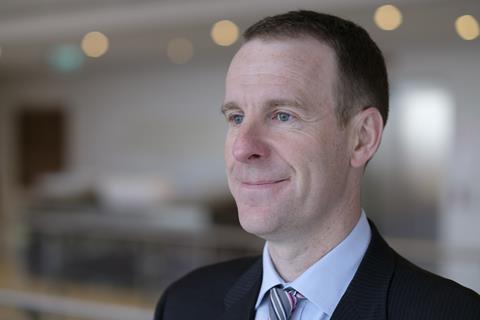The sustainability of our sector depends on creating stronger incentives for the retention of key materials. TFT’s Mat Lown calls on the industry to help developers identify and record re-usable resources

Our industry has long considered the re-use of building materials to be largely unfeasible unless our lucky stars align on a project. But, while we live on a planet with finite resources, we must ask ourselves: what would it take to connect building demolition and development works to make re-use the norm?
Each year, millions of tonnes of building products are sent to landfill. Millions of tonnes more are diverted from landfill – from structural elements to cladding components, doors, pipework, ducting, brackets, lighting and more besides.
These are typically downcycled, reducing their useful life prematurely. With them goes the opportunity to preserve embodied carbon, while more carbon is emitted to replace them.
But what does that mean to consultants? My team oversees commercial building works of all kinds, from fit-outs and refurbishments to new developments and maintenance works. We analyse these projects to understand the embodied carbon they involve and get some perspective on the challenges we face.
For new developments and major refurbs, structures and facades take the largest proportion. As a result, prolonging the life of these elements is critical when driving down embodied carbon.
With the growing prominence of sustainability and broader ESG agendas, investors and developers are more open to re-use
Take, for example, a typical office refurbishment of around 50,000sq ft. The materials required to fit out that space can emit 393 tonnes of CO2. This is the equivalent of emissions from 586 return flights between London and New York.
But new incentives are driving our industry to improve. With the growing prominence of sustainability and broader ESG agendas, investors and developers are more open to re-use.
Project teams are also learning more about how best to re-use materials in more viable ways. The next step towards “mainstreaming” the practice is developing usable inventories, allowing teams to understand the availability of existing products and their best uses at the earliest possible stage.
Good modelling data is essential for this, but that has traditionally been seen as complex work demanding time from key team members: sustainability, cost and M&E consultants, BIM experts, geomatics specialists and others. In our experience, this work can be streamlined, and it must be if we want to make progress.
Sample-based modelling, for example, can identify the relevant building fabric and apply knowledge of dimensions, material quantities and carbon data to understand the overall carbon embodied in the rest of the building. It produces actionable data with less resource. Applying this to M&E and HVAC systems is the next step, assessing the embodied carbon in elements such as cables, fan units and pipework.
Implementing this sample-based modelling approach as part of a 137,000sq ft office strip-out, we worked with the contractor to understand the materials involved at an early stage. Our audit demonstrated the potential to re-use existing materials in the refurbishment on other projects, contributing to the low carbon credentials of the project overall by diverting 99.95% of strip-out waste from landfill.
Smarter modelling and more complete inventories could be our next step towards more effective re-use
As a growing number of projects seek to model and record building information in more consistent formats, the more viable re-use networks will become. A nationwide – or even a global – network of supply and demand for salvaged materials will eventually feed a virtuous cycle of improved information, better materials and more comprehensively informed re-use projects which, in turn, contribute more data for others to access.
The sustainability of our sector depends on creating stronger commercial incentives for retaining key materials, as well as making the salvage process a more financially attractive alternative to disposal. Landfill tax has been a key driver for diverting waste; smarter modelling and more complete inventories could be our next step towards more effective re-use.
Mat Lown is head of ESG and sustainability at TFT Consultants



























No comments yet